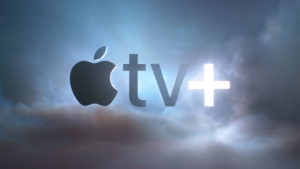
Microsoft on Sunday announced that it would retire the service for its Zune digital media players beginning immediately, and users will no longer able to stream or download content to the device from the Zune music service.
The device will continue to function as a music player, and any downloaded content will remain on the device. Users can transfer music to and from the device, but content that was purchased with digital rights management in place might not continue to play if the license can’t be renewed, the company pointed out.
Existing Zune Music Pass subscriptions will be converted to Groove Music Pass subscriptions, which is also the new version of the Xbox Music Pass, Microsoft said.
Unlike the old passes, this one can be used across all Groove-enabled devices, including Windows 10, Xbox One and Xbox 360 game systems, as well as Android and iOS devices. Groove Music also can be accessed on Sonos devices and through a Web browser on the PC.
Groove Music is priced at $9.99 per month or $99.90 per year. The service does not offer free tracks to download, but it has a catalog of more than 40 million songs.
No iPod Killer
The end of the line for the Zune comes almost nine years to the day that it was launched to the public — Nov. 14, 2006. The device was developed via a partnership with Toshiba, but from the beginning it was hardly the iPod killer.
Microsoft stuck with the Zune, however, and offered second-, third- and even fourth-generation updates to the player.
However, the Zune failed to gain market share in the portable music player space — while by 2010 smartphones with app-driven music options were displacing the digital music player market. As a result, the company announced in March 2011 that no new Zune players would be developed, and it encouraged users to migrate to the Windows Phone platform instead.
Tech Flop
In the end, the Zune failed where the iPod succeeded.
“The main lesson has to do with ecosystem,” said Roger Kay, principal analyst atEndpoint Technologies Associates.
“The Zune was just a device, whereas Apple not only had a much better device — one that was more intuitive to use and even worked better — but it also had iTunes and all the content licensing,” he told the E-Commerce Times.
“Consumers buy a solution and not a product,” said Roger Entner, principal analyst at Recon Analytics.
“The Zune was a good music player, but didn’t have the entire software/hardware/music buying experience that the iPod provided,” he told the E-Commerce Times.
Too Little Too Late?
Apple’s iPod wasn’t the first portable music player, but it managed to capture the market with its intuitive-to-use device, snappy ad campaigns and music infrastructure.
Microsoft likely wouldn’t have been more successful even if it had arrived prior to the iPod, Kay noted.
“MP3 players had been around for a while, and no one was doing very well with them,” he said. “Creative probably had the best one pre-iPod, but none of them were going anywhere.”
Zune was a response to iPod — one that Microsoft wouldn’t have bothered with had it not been for Apple’s success, added Kay.
It was a pattern the company followed when Apple adopted the GUI interface with its line of Macs.
“Microsoft had to be prodded into a new market by a competitor,” said Kay. “It was too fat, dumb and happy with its monopoly profits to bother with anything new unless if felt threatened.”
Games Get the Attention
The Zune also represented an internal conflict of interest at Microsoft.
“Not only did the Zune compete against products from Apple, it also competed for mindshare within Microsoft from Xbox,” said Josh Crandall, principal analyst atNetpop Research.
“Over the years, Microsoft centered brand building around the gaming platform, squeezing any room away from the Zune,” he told the E-Commerce Times.
After numerous years of semisupport, “retiring the Zune was more of a housekeeping item than anything else,” said Recon Analytics’ Entner.
“The Zune died quite a few years ago,” he added.
“It’s about time Microsoft officially retires the Zune,” said Crandall. “Consumers have forgotten about it for years now.”
Microsoft may be signaling that there isn’t extra room at the company for subpar products.
“The message is that they are doubling down on Xbox and Surface,” added Crandall. “Cut the chaff, focus on what’s working, and continue to iterate. It’s the new Microsoft way.”











































The Zune is not the only late to market failure for Microsoft. The Windows phones are not too far behind the Zune in their end of life. The lack of content not only killed the Zune but again this similar issue happened to the Surface RT tablet when a lack of good apps which is basically all the Windows RT version could run was DOA. This is where Apple has done well with products, not only have they designed products that are easy to use, but they also backed up those products with content or a very good operating system. I think Microsoft has finally learned to some extent that you cannot be absolutely last in tech innovation and succeed. Even if you do make a good product. Its not enough just to match another companies product. You have to exceed the expectations of users. It almost every product Microsoft does, they manage to make some kind of mistake. From the Zune image, to those stupid Kin phones to Windows 8, Windows RT, and Vista. Even when we think Microsoft has made a decent OS in Windows 10. The positive feeling is muted by privacy issues and Windows update changes. Its AM azing how Microsoft has a curse on itself for success.